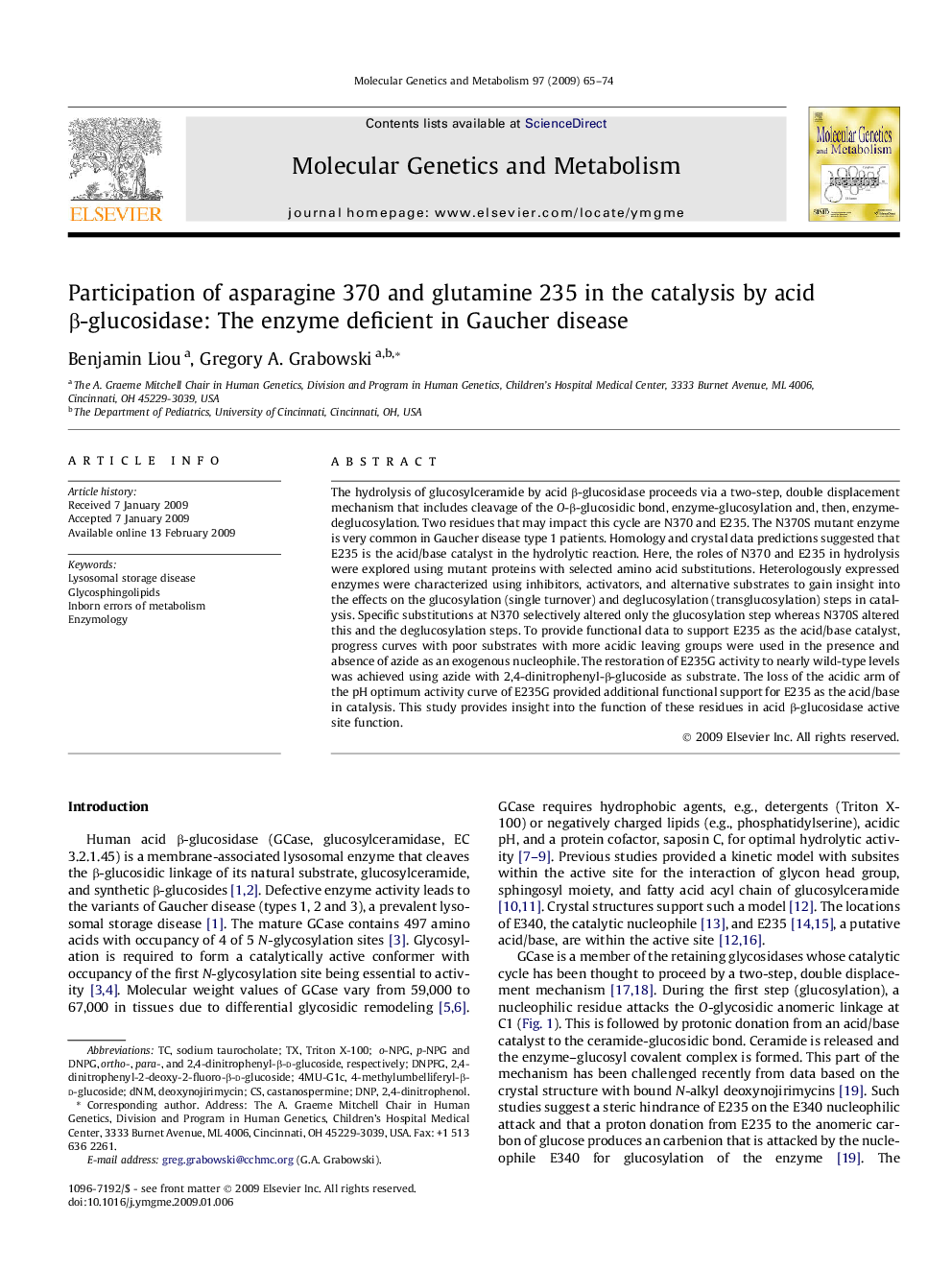| Article ID | Journal | Published Year | Pages | File Type |
|---|---|---|---|---|
| 1999853 | Molecular Genetics and Metabolism | 2009 | 10 Pages |
The hydrolysis of glucosylceramide by acid β-glucosidase proceeds via a two-step, double displacement mechanism that includes cleavage of the O-β-glucosidic bond, enzyme-glucosylation and, then, enzyme-deglucosylation. Two residues that may impact this cycle are N370 and E235. The N370S mutant enzyme is very common in Gaucher disease type 1 patients. Homology and crystal data predictions suggested that E235 is the acid/base catalyst in the hydrolytic reaction. Here, the roles of N370 and E235 in hydrolysis were explored using mutant proteins with selected amino acid substitutions. Heterologously expressed enzymes were characterized using inhibitors, activators, and alternative substrates to gain insight into the effects on the glucosylation (single turnover) and deglucosylation (transglucosylation) steps in catalysis. Specific substitutions at N370 selectively altered only the glucosylation step whereas N370S altered this and the deglucosylation steps. To provide functional data to support E235 as the acid/base catalyst, progress curves with poor substrates with more acidic leaving groups were used in the presence and absence of azide as an exogenous nucleophile. The restoration of E235G activity to nearly wild-type levels was achieved using azide with 2,4-dinitrophenyl-β-glucoside as substrate. The loss of the acidic arm of the pH optimum activity curve of E235G provided additional functional support for E235 as the acid/base in catalysis. This study provides insight into the function of these residues in acid β-glucosidase active site function.
